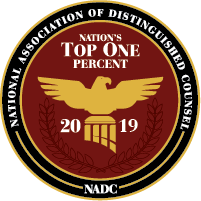California has strict punishments for possessing controlled substances. The consequences of those offenses are enough to impact the rest of your life. So, as you can imagine charges for possessing materials for the manufacturing of controlled substances carry much steeper penalties than simple possession.
In addition to incarceration and fines, a criminal record with this offense on it will affect future employment options, academic pursuits, and housing opportunities. Attempting to fight the allegations alone can make anyone anxiety-ridden. Decrease the stress of the situation and find the help of a professional criminal defense attorney who knows how to defend your rights.
For a deeper understanding of this statute, let’s take a look at how California outlines possessing materials for manufacturing controlled substances.
Free Consultation (619) 233-4433
Definition of Possessing Materials for Manufacturing Controlled Substances
A controlled substance is considered narcotics that the federal government keeps track of. This means they regulate the manufacture, possession, and use of them. California’s Health and Safety Codes 11383 and 11383.5 cover specific controlled substances: PCP and methamphetamine.
Under HS 11383, the possession of certain chemicals with the intent to manufacture PCP (phencyclidine) and HS 11383.5 the possession of certain materials with intent to manufacture meth (methamphetamine) or N-ethylamphetamine is a felony. You violate HS 11383 or HS 11383.5 when you:
- Possess specific chemicals that can be combined and used to manufacture PCP or meth, OR similar generic types of illicit substances; and
- To possess the materials does not mean you have to personally possess or hold them. If you have control over said chemicals or you had the right to control them, personally or by using someone else, that would be considered being in possession of those materials.
- Substances covered under this statute include:
- Chemical materials that can be used to develop methamphetamines are:
- Ephedrine and/or common cold and cough medicines, such as pseudoephedrine;
- Methylamine and phenyl-2-propanone;
- Substances that in combination can be used to create PCP are:
- Piperidine and cyclohexanone.
- You had the intention of using the chemicals in your possession to produce meth and/or PCP.
- Having the intent to use the illicit chemical combinations means you were planning on using them.
- Chemical materials that can be used to develop methamphetamines are:
Closely-Related Offenses
The following is a brief description of which laws are similar to HS 11383 or HS 11383.5. It’s also possible to face multiple offenses depending on the details of your case.
California Health & Safety Code 11379, transportation and/or sale of methamphetamine;
This crime is committed when someone drives while in possession of methamphetamine, sells methamphetamine, or if they give it away or administer the controlled substance to another person.
California Health & Safety Code 11379.6, manufacturing of a controlled substance;
This law prohibits participating in or making offers to participate in the illegal manufacturing of controlled substances.
California Health & Safety Code 11350, possession of controlled substances;
This is also known as simple possession or possession for personal use, which makes it illegal to possess a controlled substance without having a valid prescription for it.
California Health & Safety Code 11351, possession of drugs for sale;
It’s a crime to possess and sell specific controlled substances such as prescription pain meds (hydrocodone, oxycodone, Vicodin), or illicit drugs (cocaine, heroin, LSD).
California Health & Safety Code 11352, sale or transport of controlled substances;
The sale or transportation of certain illegal drugs such as prescription opiates, cocaine, heroin, peyote, or LSD is prohibited under this statute.
What The Prosecution Does
For the prosecution to get a conviction for HS 11383 or HS 11383.5, they must first prove several facts of the case. These facts are also known as the elements of the case, which are:
- The defendant was in possession of certain chemicals that could be combined to manufacture PCP, methamphetamine, or comparable generic types of illicit drugs; and
- Possession does not necessarily mean you must have the chemical materials in your personal possession. If you are in control of these chemicals yourself or through using someone else, it would still apply.
- The defendant intended on using said chemicals to produce PCP, meth, or related prohibited drugs.
- The intent is just as important as possession under this statute. The defendant would have had to plan on using specific materials to help produce unlawful controlled substances.
The prosecution can still charge and get a conviction for someone guilty of possession under HS 11383 or HS 11383.5 even if:
- The defendant never came in contact with the illicit materials; OR
- You can still face possession charges without ever having touched the unlawful chemical materials.
- They did not have the mental or physical ability to manufacture anything.
- Regardless of whether the defendant has the mental or physical capacity to produce illegal controlled substances, if they managed to get a hold of chemical materials within intent to manufacture PCP or crystal meth, they would still be guilty.
Who Can Be Charged
The following illustrates who can be charged with HS 11383 or HS 11383.5. It’s also commonplace for someone to face multiple offenses in addition to possessing material for the manufacture of PCP or meth. Take a look at the instances below for an idea of what those associated charges can be.
Example 1:
Francis wanted to make a major amount of money in a short period of time so he could live off-the-grid. His roommate was a felon who had to leave town in a hurry, telling Francis he could have whatever was left behind. Francis found a supply of the chemicals piperidine and cyclohexanone in the roommate’s closet. He decided he wanted to manufacture PCP but he did not have the necessary lab equipment to do it.
Although Francis was not the original person to possess the materials used to produce PCP he did accept control of them. He would face charges under HS 11383, even though he lacked the equipment to manufacture the PCP, he still possessed materials that he intended to use for the manufacture of phencyclidine. Lacking the tools needed to produce PCP is not relevant when facing charges for possession with intent.
Example 2:
Armond wanted to manufacture methamphetamine and found a supplier who could provide phenylacetone. He stored the phenylacetone in the basement of his brother’s house. Slowly, he began purchasing the necessary tools and equipment to build a functional meth lab.
Although the chemical materials were not in his personal possession, he would still be guilty of HS 11383.5, possession with intent to manufacture methamphetamine. Although he was in the initial stages of building a meth lab, the fact that he was actively doing so means he could also face charges for operating a meth lab which is covered under HS 11379.6, which is the unlawful manufacture of controlled substances.
Example 3:
Sherri and Lance have a large family with fifteen people living in their household. A terrible cold-flu is going around. They decide to buy as much cold and cough medicine as they can from the local convenience store. Sherri knows there is a limit to exactly how much they can buy, so she and her husband split up the shopping list. The neighborhood stores were low forcing them to shop at three different places to get what they need. A manager noticed how much Sudafed and other cold medicines the couple was buying. He reported them to the authorities.
Several plastic bags of medicines that contain pseudoephedrine were in the back seat when they were pulled over by law enforcement. Sherri and Lance did possess material that could possibly be used to manufacture methamphetamine, however, they had a valid reason for the amount of cold medicine they purchased. They would not face charges for HS 11383.5 because they lack intent and had a legitimate, medical excuse for needing that much medicine at one time.
Example 4:
Henry, a hopeful chemist, had extreme amounts of student loans and wanted to pay off his debt as soon as possible. His cousin Rod was a local drug dealer who had access to several types of unlawful controlled substances. He wanted to be included in Rod’s illicit dealings and offered to manufacture crystal meth to contribute. At this point, Henry offering to produce controlled substances for his cousin’s operation is already an unlawful act, prohibited under HS 11379.6, the manufacture of controlled substances.
Rod accepts the offer and Henry slowly begins to accumulate pseudoephedrine in the form of various flu and cold medicines. He also purchases material for building a meth lab. Regardless of how much chemical material and lab equipment he bought, Henry would still face charges under HS 11383.5 for possessing chemical substances with the intent to manufacture methamphetamine.
Example 5:
Continuing with the previous example, let’s say Henry succeeded in getting his equipment set up and had all the necessary chemicals. Before manufacturing any methamphetamine, his cousin requested Henry’s assistance with the transport of other illegal drugs. These included opioid analgesics in a variety of pill forms, along with cocaine, heroin, and morphine.
Henry would be guilty of HS 11383.5, possessing material with intent to manufacture meth. He could also face multiple drug offenses including, HS 11351 possessing drugs for sale, and HS 11352, the transport and sale of controlled substances. These are all felony offenses that carry tens of thousands of dollars in fines and years of incarceration. Henry was able to build the meth lab as well. This would also make him guilty of HS 11379.6, manufacturing controlled substances.
Meth labs are considered especially dangerous because they are prone to explosions. The chemical compounds used are also harmful to humans, wildlife, and the surrounding environment. Prosecutors will not push for light sentencing when it involves functional equipment and highly dangerous narcotics.
Legal Defense
A conviction for HS 11383 or HS 11383.5 carries felony punishments so it’s highly recommended you find an expert criminal defense attorney to help fight these allegations. Fortunately, there are common legal defenses that have been used to fight these charges.
Unlawful Search and Seizure
The Fourth Amendment states citizens are protected from illegal search and seizure. This means any local, state, or federal law enforcement agencies are required to have a valid search warrant or probable cause to search your person or property.
For instance, Jay was pulled over on the I5 for allegedly speeding. He told the officer he had been obeying all traffic laws and had the dashcam to show it. The situation only escalated from there, resulting in the officer forcibly removing Jay from the vehicle and searching his car. The officer found plastic bags full of Mucinex, Sudafed, and a mix of different cold medicines, all of which contained pseudoephedrine. There was also a gym bag with a couple of bottles of Oxycodone and Vicodin with the prescription labels stripped. Jay was arrested for possession with intent to manufacture meth, HS 11383.5 and the transport of controlled substances, HS 11352.
Although Jay did have the stock of cold medicines and a bag of unmarked prescription drugs, the officer did not have probable cause to pull him over. Fortunately, Jay’s defense lawyer was able to use Jay’s dashcam video to show he had been following the speed limit and the officer had no feasible cause to pull him over. Without probable cause or a search warrant, Jays’ criminal defense attorney was able to prove this was a case of unlawful search and seizure.
Lack of Intent and/or Lack of Knowledge
If the defendant did not know the materials they possessed could be used to manufacture drugs, they should not be guilty of HS 11383 or HS 11383.5. Even if they knew the nature of the chemicals in their possession – if the defendant had no intention of producing PCP or methamphetamine with it, they should not be guilty of this offense.
For instance, Max asked his neighbor Yram for a ride home from work. On the way home, rolled through a stop sign. Yram got nervous when a cop car tried to pull them over. Instead of pulling over right away, he drove for an additional four miles before Max was able to convince him to pull over. The police found piperidine and cyclohexanone in a backpack in the back seat. Both men were charged with possession with intent to manufacture PCP under HS 11383.
Max should not be guilty of HS 11383 because he didn’t know what those chemicals were. His lawyer was able to successfully prove Max simply needed a ride and Yram was the only guilty party. Max not only lacked the knowledge about the materials but he also lacked the intent to create any unlawful substances.
Mistaken Identity or False Accusation
Unfortunately, there are cases where the defendant was not the one that possessed the materials or they were not aware they were being used by another party to commit a crime. Situations like this can lead to accusing the wrong person of the crime.
Nestor borrows his friend’s car, not realizing the vehicle was implicated in a robbery at a pharmacy. The culprits stole a number of opioids, opiates, and enough ephedrine and pseudoephedrine products to manufacture methamphetamine. Nestor was instantly pulled over and arrested. He was facing charges for possibly be in control of material with intent to produce illicit controlled substances.
In this instance, the friend/owner of the vehicle would be the guilty party. Nestor was mistakenly identified as his friend. It wasn’t until the police station that the driver’s license proved it. He did not own the vehicle nor did he have any knowledge about the robbery and should not be guilty of HS 11383.5.
Penalties For HS 11383 & HS 11383.5
The following are the punishments you face if you are convicted of possession of materials used to manufacture either PCP, methamphetamine, N-ethylamphetamine or the generic equivalents.
Felony;
Formal (felony) probation,
2, 4, or 6 years in county jail, and/or
Up to ten thousand dollars in fines.
Enhanced Punishments
The consequences are more severe if minors were near or involved in the defendants’ activities. More specifically, if a minor under the age of sixteen is present when the defendant was in possession of the illicit materials, they would face;
An additional two years added to your jail sentence, to be served consecutively.
If the minor suffered any great bodily injury as a result of their possession of said unlawful chemicals, they would face;
An additional five years added to your overall sentence, to be served consecutively.
Having a felony conviction could lead to a strike on your record under California’s Three Strikes Law. This means if convicted of three serious and/or violent felonies, the sentencing could be twenty-five years to life in prison.
Penalties for Similar Offenses
California Health & Safety Code 11379, sale and/or transportation of methamphetamine;
Felony;
2, 3, or 4 years in county jail, and/or
Fines of up to ten thousand dollars.
California Health & Safety Code 11379.6, manufacturing a controlled substance;
Felony; (engaging in the manufacturing of illegal controlled substances)
3, 5, or 7 years in state prison, and
Fines of up to fifty thousand dollars.
Felony; (offering to engage in said manufacturing)
Formal (felony) probation, and
Up to 1 year in county jail, or
3, 4, or 5 years in county jail.
California Health & Safety Code 11350, possession of controlled substances;
Misdemeanor;
Up to 1 year in county jail, and/or
Fines of up to one thousand dollars.
California Health & Safety Code 11351, possession of drugs for sale;
Felony:
Formal (felony) probation, and
Up to 1 year in county jail, or
2, 3, or 4 years in county jail, and/or
Fines of up to twenty thousand dollars.
California Health & Safety Code 11352, sale of controlled substances;
Felony;
Formal (felony) probation,
3, 4, or 5 years in county jail,
Up to twenty thousand dollars in fines.
Who Can Help
If you or someone you love is facing charges for possessing material to manufacture controlled substances and you are located in San Diego, Orange County, or Lost Angeles, contact the Law Offices of Anna R. Yum. Attorney Yum understands how a felony on your criminal record can impact the rest of your life.
As a former prosecutor, now an award-winning criminal defense attorney, Attorney Yum knows how to aggressively fight for the best possible outcome.











